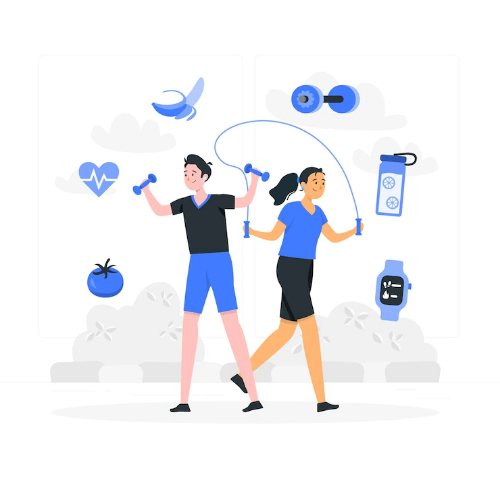Save 25% On Your First Autoship Order
Save 25% On Your First Autoship Order

Breast cancer is the second most diagnosed cancer among American women after skin cancer. According to statistics, 1 in 8 women, about 12%, will develop breast cancer at some point in their life. Though rare, breast cancer can affect men, which accounts for about 1 in 100 breast cancer cases diagnosed in the United States. Breast cancer can be fatal if not detected and treated in the initial stages. About 2.6% of women will die of this deadly disease.
On the bright side, mortality rates have significantly declined over the years, all thanks to breast cancer awareness. Breast cancer awareness month (BCAM), also referred to in the USA as National Breast Cancer Awareness Month (NBCAM), is observed every October.
During this entire month, many organizations and breast cancer charities hold campaigns to raise awareness among women about this terrible disease and encourage them to go for regular screenings. Apart from educating people about the impact of breast cancer, many organizations raise funds to support research into its cause, diagnosis, prevention, treatment, and cure.
Widespread support from different corners of society for breast cancer awareness and research funding has helped to a substantial decrease in the death rate. The breast cancer survival rate is steadily increasing as more and more US women perform early screening like mammograms and self and clinical tests. Thus, awareness is key in preventing or surviving breast cancer.
Recognizing breast cancer symptoms and risk factors, scheduling regular mammograms, and adopting healthy lifestyle choices can save precious lives. With proper diagnosis and treatment in the initial stages, breast cancer is a highly treatable form of cancer and dramatically improves the quality of life.
Breast cancer is a disease in which normal cells in the breast undergo changes in their molecular structure and grow out of control. Breast cancer can start in different parts of the breast.
Most breast cancer symptoms begin in the ducts and lobules. Invasive breast cancer occurs when cancer begins in one part of the breast and grows to other parts of the breast. When cancer starts in the ducts and spreads to other parts of the breast tissue is known as invasive ductal carcinoma. Likewise, when cancer cells begin in the lobules and grow outside the lobules is called invasive lobular carcinoma. Breast cancer can spread to other parts of the body through blood vessels and lymph vessels, known as metastatic breast cancer.



Every woman knows how her breasts normally look and feel. Therefore, she can easily recognize any changes that may occur. Different people can have different symptoms of breast cancer, while some may not have symptoms at all. Some warning signs and symptoms of breast cancer may include:
Having a symptom that is listed above does not necessarily mean you have breast cancer. If you notice any unusual changes in your breasts, be sure to see your doctor for a prompt evaluation.
All women have the potential to get breast cancer; however, some women may be more at risk than others. While some risk factors are uncontrollable and you cannot change, there are some lifestyle-related risk factors that you can control.
While you cannot control certain risk factors, opting for healthy lifestyle choices, getting regular screenings, and self-examination can help lower your risk of developing breast cancer.
Eating healthy food, exercising, physical activity, and limiting alcohol consumption can decrease the risk of breast cancer or improve your chances of surviving cancer if it occurs.
Recent studies show that breastfeeding might play a role in breast cancer prevention. The longer you breastfeed, the greater its protective effect.
If you are taking or have been told to take birth control pills or hormone replacement therapy, talk with the doctor about the risks and benefits and find out if it is right for you. You might be able to manage symptoms with nonhormonal therapies and medications.
If you notice any unusual changes in your breasts, such as lumps or skin changes, consult your doctor immediately.
If you have a family history of breast cancer, inherited changes in your BRCA1 and BRCA2 genes, or a family member with known gene mutation, talk to your doctor about genetic testing and ways to lower your risk.
The recent increase in breast cancer survival rates is primarily due to early detection through screening. When breast cancer is detected in its initial stages, there are more treatment options and a better chance of survival. That is why regular screening is crucial after the age of 40.
The American College of Physicians (ACP) recommends the following guidelines for women at average risk of breast cancer:
A mammogram is the most effective weapon in the battle against breast cancer. It can detect breast cancer before it can be felt. Specific recommendations for mammograms vary from person to person, so talk with your physician to see if you should get regular mammograms. Furthermore, ensure you have a clinical breast examination done by your doctor once a year.
Breast self-exam can be an important way to find breast cancer early. It is recommended that women perform self-exams on their breasts at least once a month. The examination can help you know how your breasts usually look and feel so that you can be aware of any changes that occur. While no single test can detect all breast cancers early, breast self-exam in combination with other screening methods can help.
Awareness is power! The main motto of breast cancer awareness month is to provide women with information about breast cancer and early screening procedures so that they can live in pink of health and prevent cancer.
Disclaimer: All content found on our website, including images, videos, infographics, and text were created solely for informational purposes. Our reviewed content should never be used for the purpose of diagnosis or treatment of any medical conditions. Content shared on our websites is not meant to be used as a substitute for advice from a certified medical professional. Reliance on the information provided on our website as a basis for patient treatment is solely at your own risk. We urge all our customers to always consult a physician or a certified medical professional before trying or using a new medical product.

Sailaxmi Chennuru, has been a Health Products For You contributor since 2017. A business management graduate, the study of anatomy has always been of interest to her.
After working as a medical transcriptionist for several years, she developed a keen interest ...
How To Increase Iron Levels Quickly
It’s a question that must have puzzled you like many others. Iron is essential in hemoglobin production and its inadequate levels can negatively impact your health. Dive into this informative article to explore top iron-rich foods that can help you fight iron deficiency.
10 Best Coccyx Cushions for Tailbone Pain
If you're like most people, you spend about 8 to 10 hours sitting every day. However unhealthy, it is part of life for many, and can cause tailbone pain. Coccyx cushions can help alleviate this pain. Click to read more and find the perfect coccyx cushion for your tailbone pain.
5+ Best Adult Diapers for Fecal Incontinence
Dealing with fecal incontinence can be challenging, but you're not alone. Read this article and navigate through discreet and effective solutions that help you manage fecal incontinence and let you live life on your terms with confidence and comfort.
Top 5 Best Reviewed Nebulizers of 2024
Need an effective and affordable nebulizer? Look no further, in this article we offer 5 of our best reviewed nebulizers that are loved by our customers. Click to read more and find the perfect nebulizer for all your respiratory needs.
10 Best Penis Pumps For Erectile Dysfunction
For anyone dealing with erectile dysfunction, penis pumps serve as a great way to manage it. But with so many products available, determining the best one for your needs can be challenging. To assist you in refining your choices and making an informed decision, here are our top 10 options, recognized for their effectiveness and safety.